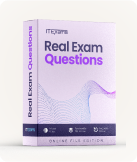IBM C9510-418 - IBM WebSphere Application Server Network Deployment V9.0 Core Administration Exam
Page: 1 / 26
Total 128 questions
Question #1 (Topic: Topic 1)
Assuming there are no custom properties defined in current plugin-cfg.xml file, what should be done before running the GenPluginCfg command?
A. Delete the global plugin-cfg.xml in the <profile_root>/config/cells directory.
B. Delete the current plugin-cfg.xml in the <profile_root>/config/cells directory.
C. Clear the Enable automated web server configuration processing option in the web server plugin configuration service.
D. Use either the Integrated Solutions Console or the ConfigurewebServerDefinition.jacl script to create a web server definition.
Answer: B
Question #2 (Topic: Topic 1)
An administrator installs IBM WebSphere Application Server and an HTTP server, but when configuring the environment, the administrator finds that the
WebSphere Plug-in is missing.
Which tool can be used to fix this issue?
WebSphere Plug-in is missing.
Which tool can be used to fix this issue?
A. Customization Tool Box
B. IBM Installation Manager
C. Profile Management Tool
D. Integrated Solutions Console
Answer: D
Question #3 (Topic: Topic 1)
How can an administrator deploy or update an EAR, JAR, WAR, or SAR file to an application server or cluster in a development environment?
A. Place the file in the monitored directory.
B. Place the file in the operating system defined temporary directory.
C. Place the file in the operating system defined user home directory for the user that owns the Java process.
D. Email the file to [email protected], where hostname.com is the host of the IBM WebSphere Application Server.
Answer: A
Question #4 (Topic: Topic 1)
An administrator notices that the Message Driven Beans (MDBs) are slow to complete, and decides to increase the ‘Maximum concurrent MDB invocations per
endpoint’.
Which thread pool should be tuned to ensure it can run the maximum number of MDBs without waiting?
endpoint’.
Which thread pool should be tuned to ensure it can run the maximum number of MDBs without waiting?
A. Default
B. WebContainer
C. SIBJMSRAThreadPool
D. WMQJCAResourceAdapter
Answer: D
Question #5 (Topic: Topic 1)
What does the â€"Dcom.ibm.webshpere.alarmthreadmonitor.generate.javacore JVM argument do?
A. Creates a javacore dump when a thread is hung
B. Generates a Trace message that a javacore should be generated
C. Generates a SystemOut message that a javacore should be generated
D. Allows the administrator to choose whether or not to generate a javacore when a hang is detected
Answer: A
